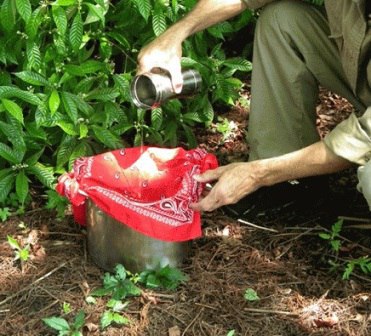Very important section, as you need to be able to jump and jump correctly,even if you practice or did parkour, it is worth learning this technique…Because to overcome the obstacle on “easy” it's not with weapons and armor….
For difficult acrobatic maneuvers, you need to make sure that all protection sits on you firmly and securely.…Otherwise, it may fly off.…
Depending on the type and size, obstacles are overcome;
unsupported and vault jumps, deep jumping, climbing and
crawling, movement on a narrow support.
Unsupported jumps are used when overcoming narrow horizontal and low vertical obstacles.
One leg landing jump:
With a run
push off in front of an obstacle with one foot, take out the other leg wide
swing forward up, jump over an obstacle, land on it
and keep moving.
Landing jump on both feet:
With a running start to push off
in front of an obstacle with one foot, helping with a wave of both hands forward upward.
Pull your leg forward as much as possible, jump over an obstacle,
land on both feet and keep moving.
Vault jumps are used to overcome obstacles up to chest level.
Bounce, stepping on an obstacle:
With a running start to push off
in front of an obstacle with one foot and giving the body forward, jump softly
to an obstacle to another (bent at the knee) leg; not straightening,
carry a pushing leg over an obstacle, jump off her and continue
traffic.
Leap with arm and leg support:
Take a running start to push off in front of an obstacle
left foot and, extending a hand with a weapon forward upward, jump on
let, leaning on it with your left hand and slightly laid out to the side
bent leg. Do not stop, move over the obstacle left
leg, jump on it and keep moving.
Depth jump is used when jumping off high obstacles and windows of houses.
Depth jump from a standing position:
Stand on the edge of an obstacle and
sit down slightly, push off with both feet, jump off bent,
legs slightly apart.
Hold the weapon with both hands or in the right hand in a horizontal position, giving it at the moment of jumping forward.
Depth jump with support on the arm:
Lean your left hand on the edge of the obstacle and, lowering the left leg down, jump off on both feet.
Hold the weapon in your right hand or behind your back, holding the butt with your hand.
Depth jump from a sitting position:
Sit on the edge of an obstacle, dangling legs, pushing off his hands and
heels, jump off bent, legs slightly apart. weapon
hold in the right hand or behind the back. In the latter case, before the jump
pull the stock over the edge of the obstacle and hold it until
landings.
Depth jump from hanging position:
Hang in your arms, holding on to
top edge of obstacle, letting go of one hand, turn sideways to
obstacle, pushing off from him with his feet and hand, jump on
bent, legs slightly apart. Weapon - in hand or behind the back;
Climbing is used when overcoming high obstacles: fences, walls, house facades.
Hip-supported climbing:
Running up to the obstacle and leaning his hands on
its top edge, push off with your feet from the ground into point-blank.
Move left leg over the obstacle, sit on the hip, transferring the right
leg, sit on your hip and then, shifting the right leg, jump off and
keep moving. Weapon - in hand or behind the back.
Climbing with support on the chest:
Running up to the obstacle and leaning his hands on
top edge, push off the ground with your feet and fall on an obstacle
breast or belly. Tilting the body forward, rest your right palm
hands into the obstacle from the opposite side and, moving your legs across
let, jump to the ground. Weapon behind the back or in the right hand; at
in the latter case, when dismounting, the weapon is pressed flat against the obstacle.
Climbing "hook":
With a running start, push off with one foot from the ground in
one step away from the obstacle and, leaning the other bent leg on
let, grab onto its edge. Pulling up, hang left side
to the obstacle so, so that its upper edge is under the arm; bent into
press the left leg against the obstacle, and take your right leg back.
With a wave of your right leg, catch the heel (shin) over the top of the obstacle,
roll over and jump off. Arms behind the back.
Climbing by force:
Take a running push off with one foot – same, as
when climbing with a "hook", grab the top edge
obstacles. Pulling up on the arms and helping with the legs, go to close range.
Further, depending on the situation and type of obstacle, climb over
it and jump off in one of the following ways: roll over
let, as when climbing with support on the chest; sit on
let, dangling legs, and jump out of a sitting position; lean on
obstruction with the right foot and, moving your left leg through it, jump out of
support positions on the arm and leg.
Climbing with the help of a friend:
Climbing is carried out based on
comrade's thigh; leaning on the shoulders of a friend; with the help of improvised means;
assistance to the climber is provided, as shown in the last picture.
Moat (ravine) is overcome by crawling on a horizontal rope.
Crawling through the gaps, narrow windows, hatches, tubes, crevices in
depending on the shape and size, it is done sideways or head first.
Overcoming various obstacles, and also at
fighting on the street and in the homes of soldiers must always exercise
vigilance. The enemy will set up various "surprises",
consisting of tension mines, push action, etc..











